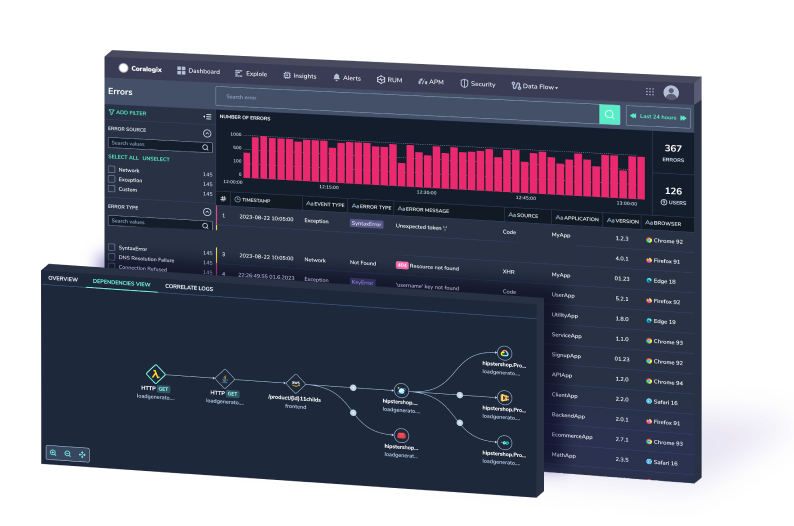CDN Logs – The 101 Guide
A Content Delivery Network (CDN) is a distributed set of servers that are designed to get your web-based content into the hands of your users as…
Here at Coralogix, we’ve mentioned before how log analytics has increasingly been gaining attention and is creating a way to cut back on software maintenance costs. In this post, we want to expand on the ways that Log Analytics can benefit the developers.
Let’s look at three facts about the growing trends of general Big Data Analytics for 2015:
1) Analytics and Business Intelligence Standardization is declining
Companies using Big Data Analytics tools are straying away from the known management tools, from a standardization of 35% in 2014 to 28% in 2015
2) Cloud-based data warehousing is on the rise
Cloud-based data warehousing services showed the biggest increase jumping to 34% in 2015 from 24% in 2014
3) Real-time technology is seeing real gains
With the development of complex event processing (CEP), mainly in the realms of financial services, security, telco, and intelligence agencies
Taking these factors into consideration, it is evident that log analytics is going places this year, and developers can benefit greatly from it. Not only will these tools and services help enrich the platform for logging, but they also can benefit in identifying bugs quicker. Saying that, we’ve come up with eight ways the developers can have greater insights and advantages from using log analytics.
1) Log Trigger Events: Log critical actions, such as user activity. This data can later be related to user cohorts for marketing, product management, and growth activity purposes. But also for the developers to optimize user flow.
2) Run Duration for Bigger Processes: For larger processes, intensive or lengthy application processes, log start and stop times. It can be correlated to pegged servers outages or load issue if they arise. This data can help to identify areas where the product is slow to respond or issues of application processes affecting infrastructure.
3) Log Deprecated Functionality: When a deprecated functionality is called, log it so the team can be alerted. This will help QA and Development know when other team members are using outdated classes by accidents.
4) Log Flag Changes: Some developers like to use flags in their code to indicate different states. Create a function for changing flags so that it is logged and clear when flags are off or on. This allows the response or alerting of when a particular flag that should have been renamed on in production.
5) Log Component Usage: Applications are a treasure pile of 3rd party component libraries. These libraries pose a risk when they are not monitored. For all the components used, it’s nice to log their usage – components name and version. There is a downside as this can be very chatty if not designed well. And it has to be by some real component tracking process outside of the collection, and from the insights.
The last three benefit the developers and their teams:
1) Standardize your log severity: an organization needs to have a standard for log severity. So that when a log is “Critical”/“Error” it is clear to the developer that there is a problem and on the other hand if you decide to log everything above information level you’d want information not to contain Debug level logs.
2) Aggregate your log data: each log resembles an action on your system, but the same log that is created by the same line of code can be generated millions of times a day with different variables (e.g., ‘User ID xxxxxxx logged in’). To see the logs that matter to you and not get lost in millions of identical logs, you need to have an easy option to aggregate logs by their log templates.
3) Decide on an alert policy: What events should be alerted, who should be notified, what alerts require an Email/SMS notifications. All these will make your life much more easy and clear with a focal point to each issue that is brought up.
Coralogix brings a new actionable approach to the Log Analytics & Management. By analyzing every log that is generated by the software, Coralogix learns the system’s flow, automatically detects broken Log patterns, and provides their root cause in a single click. Coralogix finds the patterns of broken vs. correct behavior and returns a few log entries, which is a lot more manageable than the millions of log entries that Log Analytics users have to deal with today.
